Ho Chi Minh Mausoleum
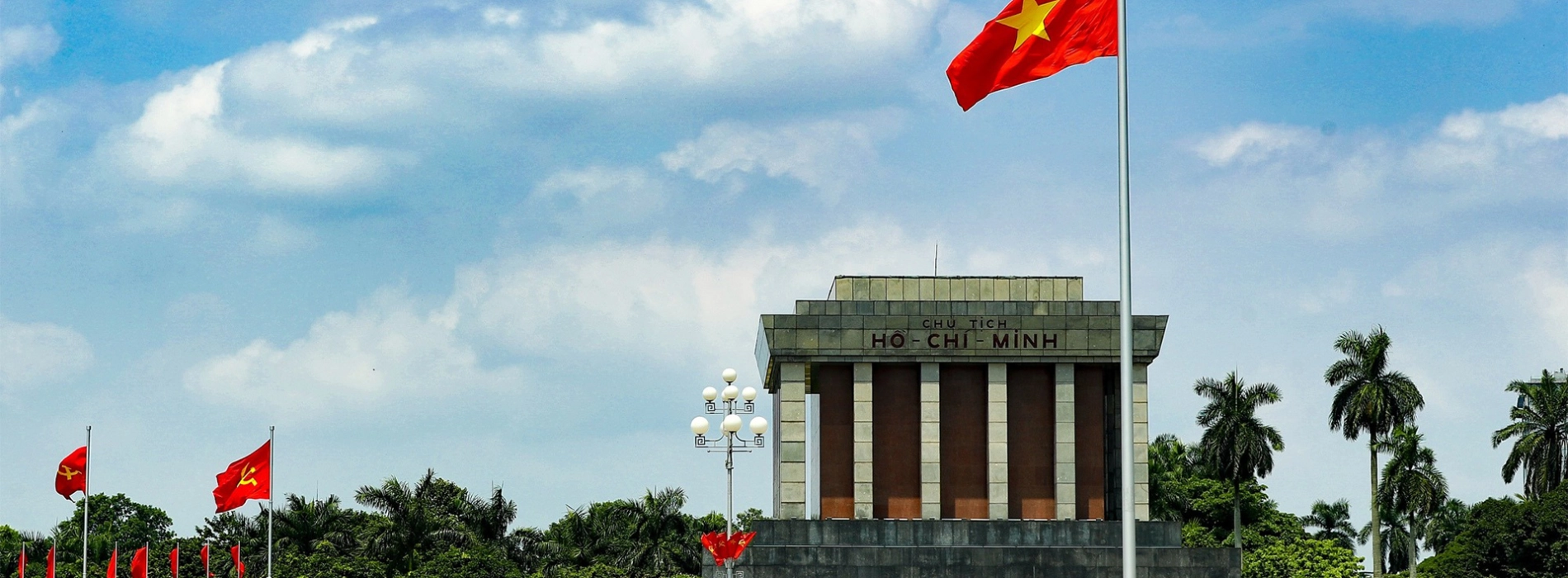
The Ho Chi Minh Mausoleum, situated in Hanoi's Ba Dinh Square, is a striking testament to Vietnam's rich history and the indomitable spirit of its people. Constructed with imposing red granite and infused with Soviet architectural influences, this mausoleum was completed in 1975 to honor the memory of Ho Chi Minh, a visionary leader who played a pivotal role in Vietnam's fight for independence.
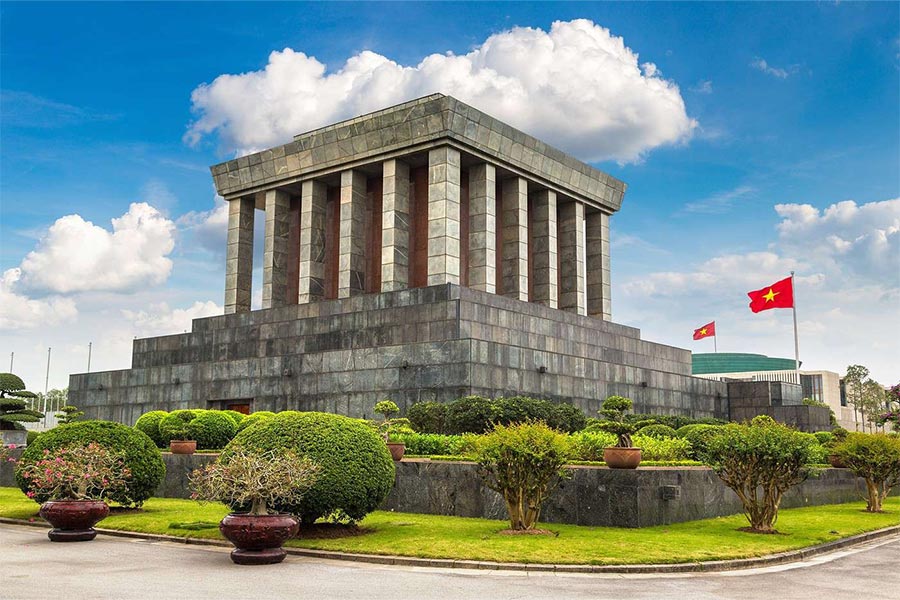
The mausoleum is to honor the memory of Ho Chi Minh President
Inside the mausoleum, visitors can witness the preserved body of Ho Chi Minh in a glass sarcophagus. The surrounding area offers a profound historical experience, with attractions like the Presidential Palace, Ho Chi Minh's stilt house, the One Pillar Pagoda, and the Ho Chi Minh Museum all contributing to a comprehensive understanding of the country's past. The Ho Chi Minh Mausoleum stands as a poignant reminder of Vietnam's resilience and the enduring legacy of a leader who forever shaped its destiny.
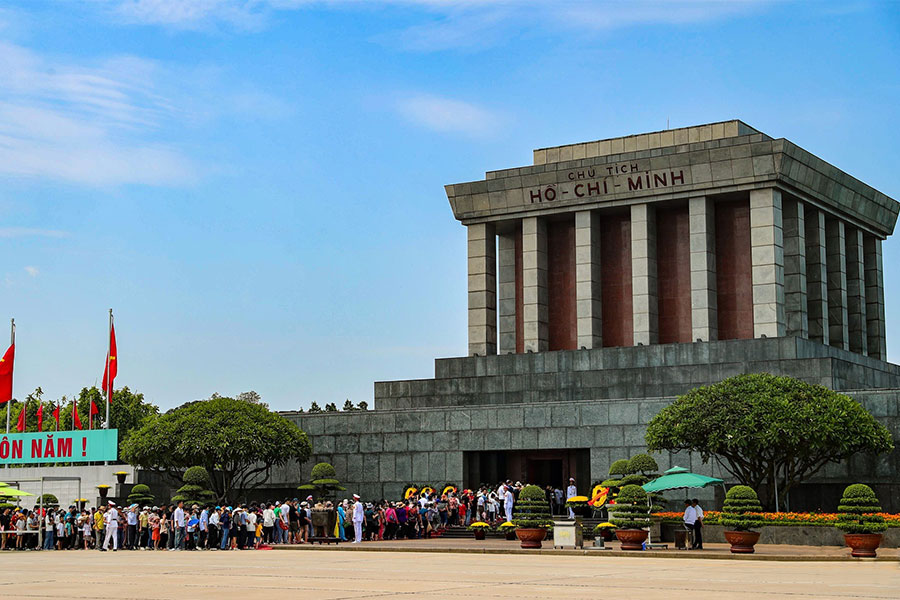
The site continues to attract diverse visitors despite its communist associations
The Ho Chi Minh Mausoleum, situated in Ba Dinh Square, Hanoi, Vietnam, emerged as a significant historical landmark following the death of Ho Chi Minh in 1969. Construction began in 1973, culminating in its inauguration on August 29, 1975, coinciding with what would have been Ho Chi Minh's 85th birthday. Inspired by the design of Moscow's Lenin Mausoleum, the structure exudes simplicity yet grandeur, reflecting the modesty and pragmatism emblematic of Ho Chi Minh's leadership. Inside, Ho Chi Minh's embalmed body rests in a glass case, drawing visitors from across Vietnam and beyond to pay their respects.
Regular maintenance ensures the preservation of the revered leader's remains, underscoring the mausoleum's enduring significance as a symbol of Vietnamese independence and socialist ideals. Despite its communist associations, the site continues to attract diverse visitors, highlighting Ho Chi Minh's enduring legacy as a national hero and unifying figure in Vietnam's history.
You may like: Vietnam Classic Highlights Tours
1. Experience the flag-raising and lowering ceremony at Ba Dinh Square
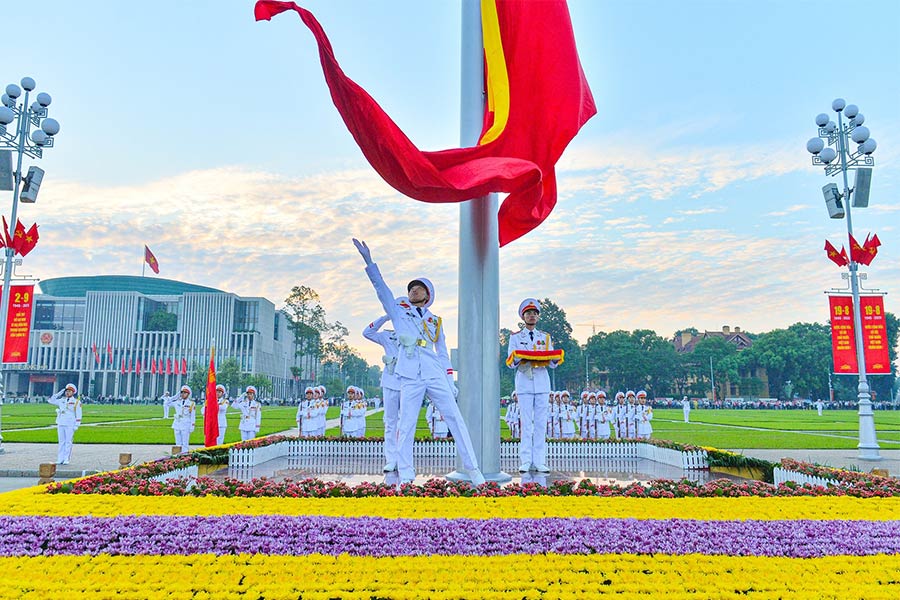
Flag-raising and lowering ceremonies are held every day in Ba Dinh Square in front of the mausoleum
Every day, at 6:00 a.m. and 9:00 p.m. in Ba Dinh Square, visitors have the chance to witness the solemn ceremony of raising and lowering the flag at the Ho Chi Minh Mausoleum. This significant event involves a 37-member shooting team executing precise rituals while the national anthem plays and the national flag waves proudly. After the flag-raising ceremony, the doors of Uncle Ho's Mausoleum are opened, marking the beginning of another day of paying respects.
2. Explore the architecture of the mausoleum
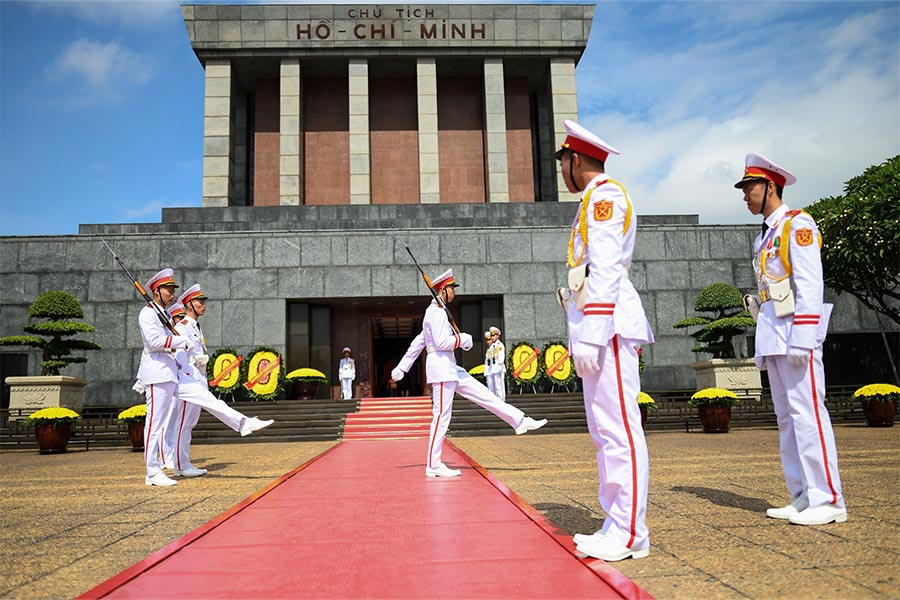
The mausoleum has a robust square structure
The architectural design of Uncle Ho's Mausoleum is a robust square structure consisting of three layers, engineered to withstand floods, bombs, and earthquakes of up to magnitude 7 on the Richter scale. Clad in gray granite, the outer layer of the mausoleum is adorned with rows of marble columns inscribed with "PRESIDENT HO - CHI - MINH" in dark red jade stone. Inside, the lobby boasts pink-red veined marble, bearing the profound message: "Nothing is more precious than Independence and Freedom", along with President Ho Chi Minh's signature in gold plate, symbolizing the fervor and aspirations of a liberated nation.
3. Visit inside Ho Chi Minh Mausoleum
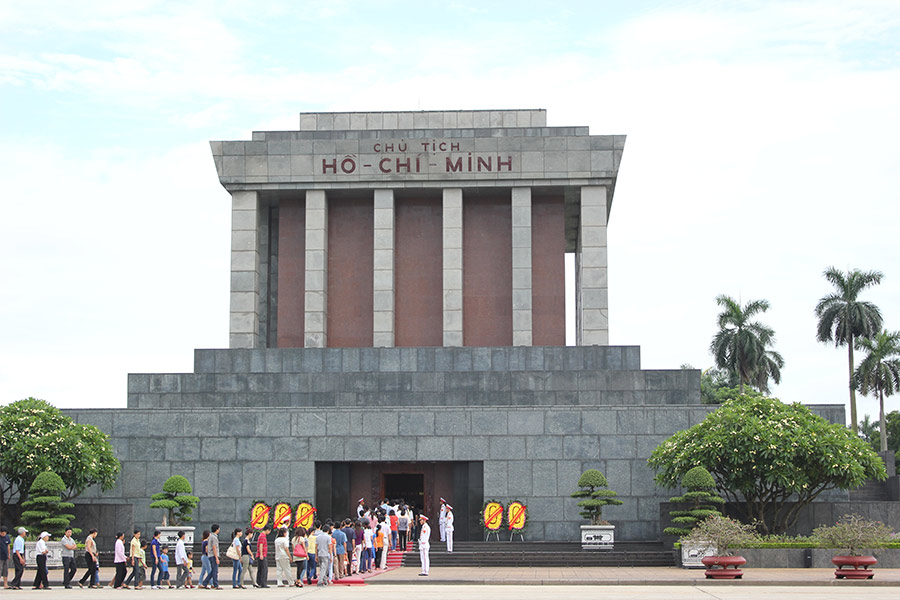
Visitors have to queue to enter the mausoleum
Inside Uncle Ho's Mausoleum, visitors encounter construction materials sourced from across the nation, including 200 sets of doors crafted from precious woods. The focal point is the chamber housing his preserved body, a space imbued with sanctity and reverence. Adorned entirely in marble, the room exudes a unique and opulent beauty. At its heart lies Ho Chi Minh's embalmed body, encased in a glass box atop a stone pedestal. During special visits, four guards stand vigil inside the chamber, enhancing the solemnity of the occasion.
4. Discover the Presidential Palace
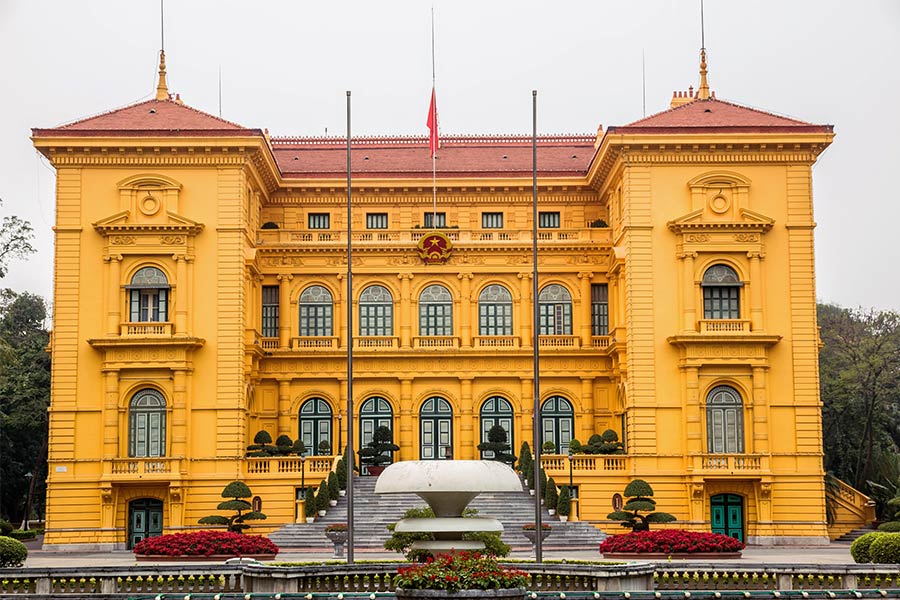
The palace originally served as the residence for the Governor of Indochina
Part of the mausoleum complex, the Presidential Palace showcases classical French architecture, originally serving as the residence for the Governor of Indochina. Ho Chi Minh utilized this space from 1954 until his passing in 1969. Today, the Presidential Palace hosts official receptions and state events amidst a verdant campus adorned with numerous trees, including majestic ancient specimens, creating a serene and refreshing ambiance.
5. Stroll through Ho Chi Minh’s Stilt House and Fish Pond

The Ho Chi Minh President chose the stilt house as his residence instead of the palace
In contrast to the grandeur of the Presidential Palace, Ho Chi Minh opted for a humble stilt house as his residence. Built according to his preferences, the house holds significant historical importance. Adjacent to the house lies a fish pond, where Ho Chi Minh often spent leisure time. He cared for the fish diligently, even providing food for them and ensuring their comfort during colder weather. Additionally, during Tet holidays, he generously gifted fish to leaders and security units.
6. Visit the Ho Chi Minh Museum

Ho Chi Minh Museum is a must-visit destination when you come to the mausoleum
A must-visit destination in Hanoi, the Ho Chi Minh Museum boasts impressive architecture, featuring a striking square block nearly 20 meters tall, positioned diagonally to resemble a graceful white lotus. With its expansive 18,000-square-meter area, the museum stands as the largest and most modern in the country.
7. Admire the One Pillar Pagoda
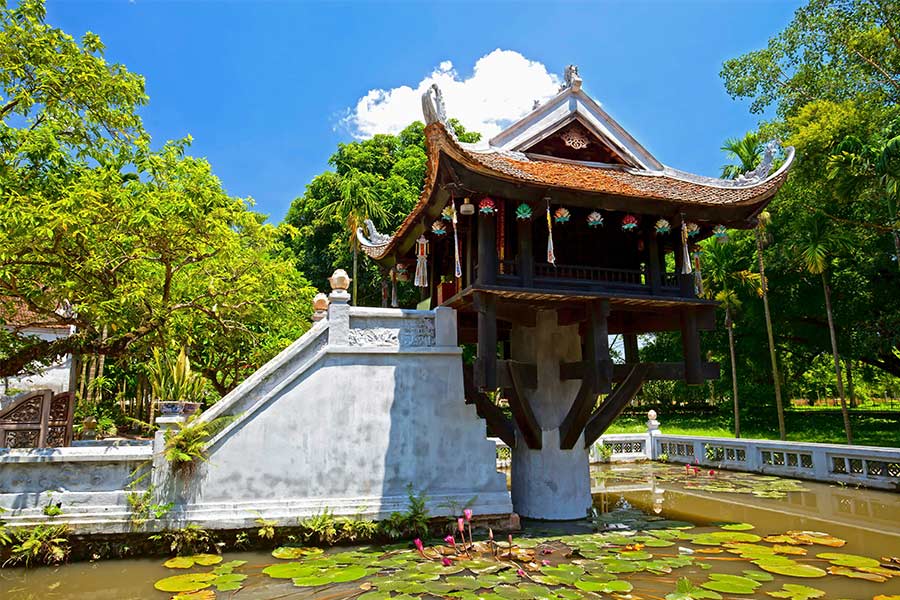
The One Pillar Pagoda dates back to the Ly Dynasty
Situated within the grounds of Uncle Ho's Mausoleum, the One Pillar Pagoda dates back to the Ly Dynasty, serving as a distinctive symbol of Hanoi. Its unique architecture mimics a lotus flower, symbolizing purity and steadfastness. Today, the pagoda offers a meaningful destination for tourists seeking to explore Hanoi's cultural and spiritual essence.
You may like: Vietnam Family Tours
Summer (April 1 - October 31)
Winter (November 1 - March 31)
Note: While Mondays and Fridays are designated for maintenance closures at the Ho Chi Minh Mausoleum, exceptions are made on special occasions like September 2, the Tet holiday's first day, and Ho Chi Minh's birthday on May 19, when the site remains open to welcome visitors.
You need to buy tickets to enter right at the Mausoleum gate area. This is also the location where you will have to line up to follow the flow of people to visit.

Visitors need to follow the instructions and regulations
When visiting the Ho Chi Minh Mausoleum, visitors are expected to adhere to several regulations:
Attitude and attire: All visitors to the mausoleum need to have a serious attitude, neat, clean and neat clothes.
Security check: Before entering the gate to visit the mausoleum, everyone needs to send their luggage for security check. You are only allowed to bring hand-carried wallets to hold money, precious metals, phones and small cameras that are turned off. Special cameras and cameras are not allowed.
Follow instructions: On the way to visit, all guests need to follow the instructions of the organizers, avoid jostling and pushing, creating conditions for everyone to participate in a safe and orderly manner.
Respect when coming to the door of the Mausoleum: When coming to the door of the Mausoleum, everyone should hold their hat or hat in their right hand and point the inside of the hat or hat outward, showing respect and dignity.
Maintain order and silence in the Mausoleum: During the process of entering the Mausoleum, everyone needs to stay quiet, not make noise, not point or touch the wall, and not put their hands in their pockets or shirt pockets. Smoking is also not allowed.
Items not allowed into the Mausoleum: It is forbidden to film, take photos or draw any images in the room where President Ho Chi Minh's body is located. It is forbidden to post these images on mass media. This helps protect the sanctity of the area.
Getting to the Ho Chi Minh Mausoleum can be done through various means of transportation. Once you arrive at the Ho Chi Minh Mausoleum complex, you can follow the signs or ask the staff for directions to the entrance of the mausoleum itself.
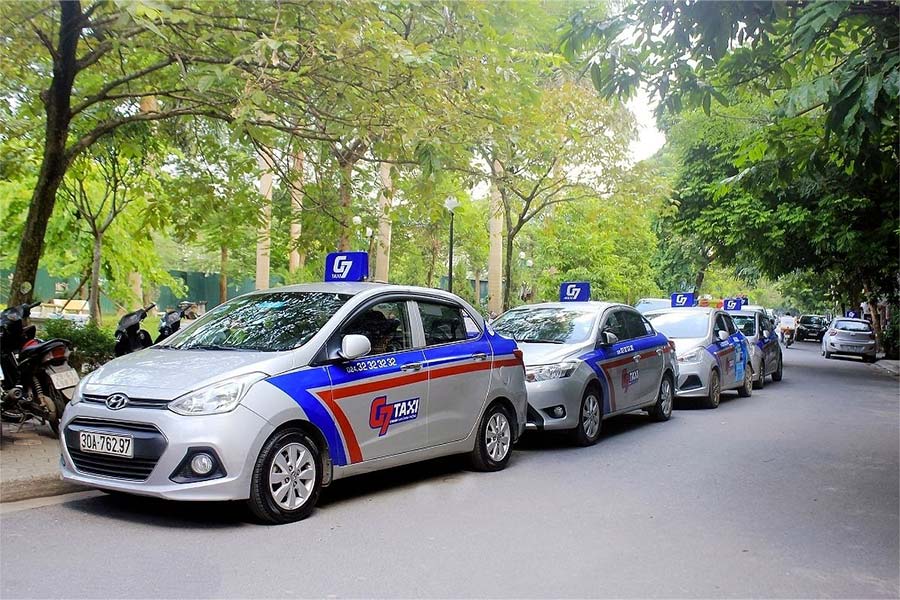
Taxi is a common option for visitors
Taxi or Ride-Hailing Services: Taxis and ride-hailing services are widely available in Hanoi. You can simply hail a taxi or use apps like Grab or Gojek to book a ride to the mausoleum.
Public Bus: Hanoi has an extensive public bus network, and several bus routes pass near the mausoleum. You can check with locals or use online maps to find the most convenient bus route to reach your destination.
Cyclo: Cyclos, traditional Vietnamese bicycle taxis,are popular modes of transportation in Hanoi. You can negotiate a fare with the driver to take you to the mausoleum.
Walking: If you're staying nearby, you can also opt to walk to the mausoleum, especially if you enjoy exploring the city on foot. Just be prepared for the weather and ensure you have comfortable walking shoes.
The Ho Chi Minh Mausoleum stands as a solemn symbol of Vietnam's reverence for its revolutionary leader. Visiting this site offers a profound glimpse into Vietnam's history and national identity. If you have any further inquiries about the site or other attractions in Hanoi, don't hesitate to contact us.